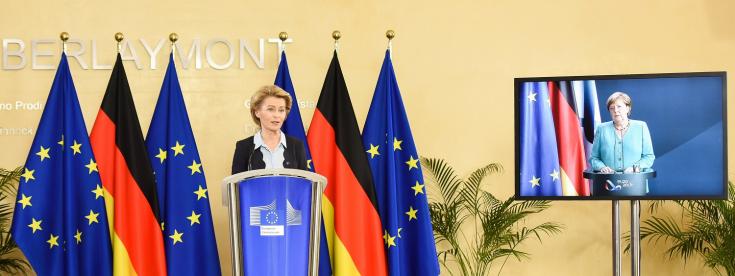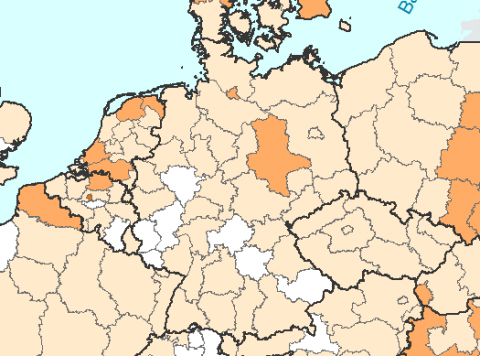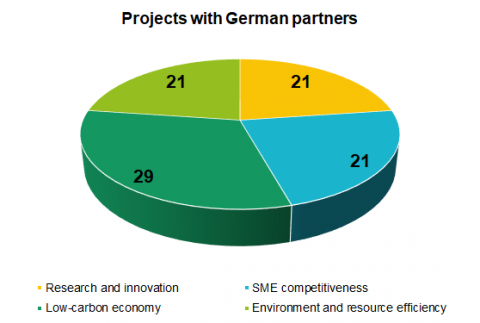Germany's place in interregional cooperation


On 1 July 2020, Germany took over the Presidency of the Council of the European Union from Croatia. The theme of the six-month presidency is ‘Together for Europe's recovery'.
While the German presidency is working tirelessly on the COVID-19 pandemic recovery measures as well as on the finalisation of the Multiannual Financial Framework, let’s have a look at how are German partners working together with others in Interreg Europe.
Germany widely present

German project partners represent 31 regions in their cooperation partnerships, out of 38 German NUTS 2 regions in total. They bring to these regions new ideas from other corners of Europe and also share with others the good practices tried and tested in their regions.
German partners working on all key topics
92 of the 258 running Interreg Europe projects have partner organisations from Germany. 14 of them have a German organisation leading the partnership.
The projects work on all topics supported by the programme. The highest interest of German partners is in low-carbon economy topics, such as sustainable mobility and energy efficiency in public buildings. This is fully in line with the green priorities of the German presidency.
Click on the project acronym and find out how:

- RESET seeks more sustainable approaches to production in the textile and clothing sector;
- TITTAN promotes healthy and active ageing through better quality and performance of the European regional healthcare systems;
- iEER boosts regional entrepreneurial ecosystems and supports young entrepreneurs;
- ZEROCO2 identifies different technologies and energy efficiency sources for near zero CO2 emission buildings;
- IMPACT looks for a balanced preservation and exploitation of protected Natura 2000 areas;
- COCOON improves the landfill management strategies in European regions.
First results making German funds more efficient
Thanks to the interregional cooperation projects and policy learning services, 14 policy changes and improvements could already take place. Nine of the changes are linked to the Structural Funds programmes; over MEUR 9 of funding for implementation of the changes come from the Structural Funds.
Good practices from German regions
Anyone can tap into the source of inspiration from Germany, which is available in our good practice database. The Policy Learning Platform experts have validated 84 good practices from Germany so far. See a few latest examples:
- Cycling network - Grüner Ring Leipzig is an association of 14 cities and municipalities working together on the development of natural tourism in and around Leipzig
- Co-Learning Lab in North Bavaria offers medium-sized companies in the region offers a jump-start for their digital transformation
- Project ELISA represents Germany's first eHighway and new dimension in e-mobility
Whether you are looking for ideas or new solutions in the field of research and innovation, SME competitiveness, low-carbon economy, or environment and resource efficiency, there are plenty from Germany in the database.
Discover more about Germany's participation in Interreg Europe
- Explore Germany's country page with an overview of the country’s involvement in the programme
- Browse through all projects with German partners and learn about further examples of fruitful interregional cooperation
- Get inspired by good practices from Germany